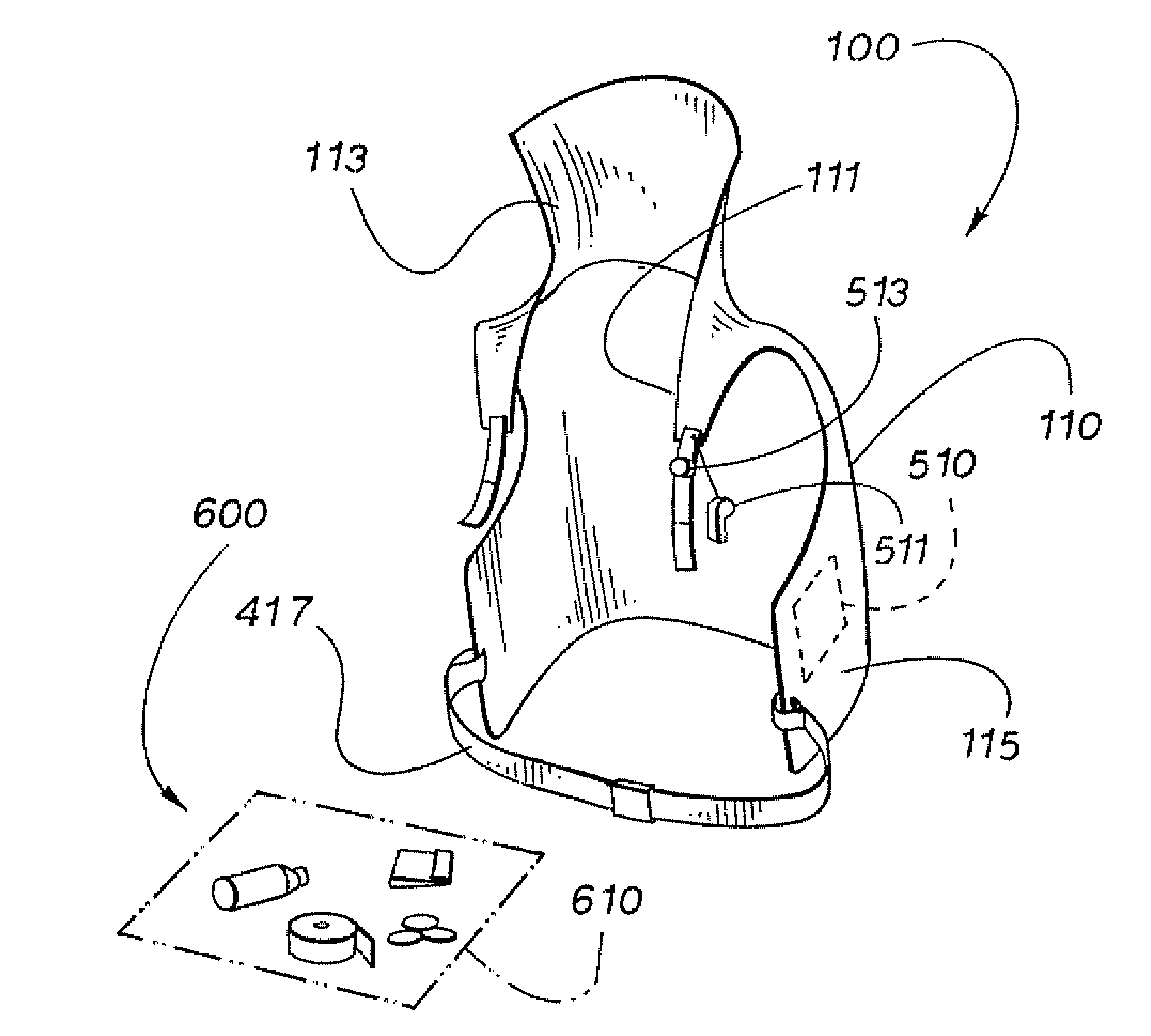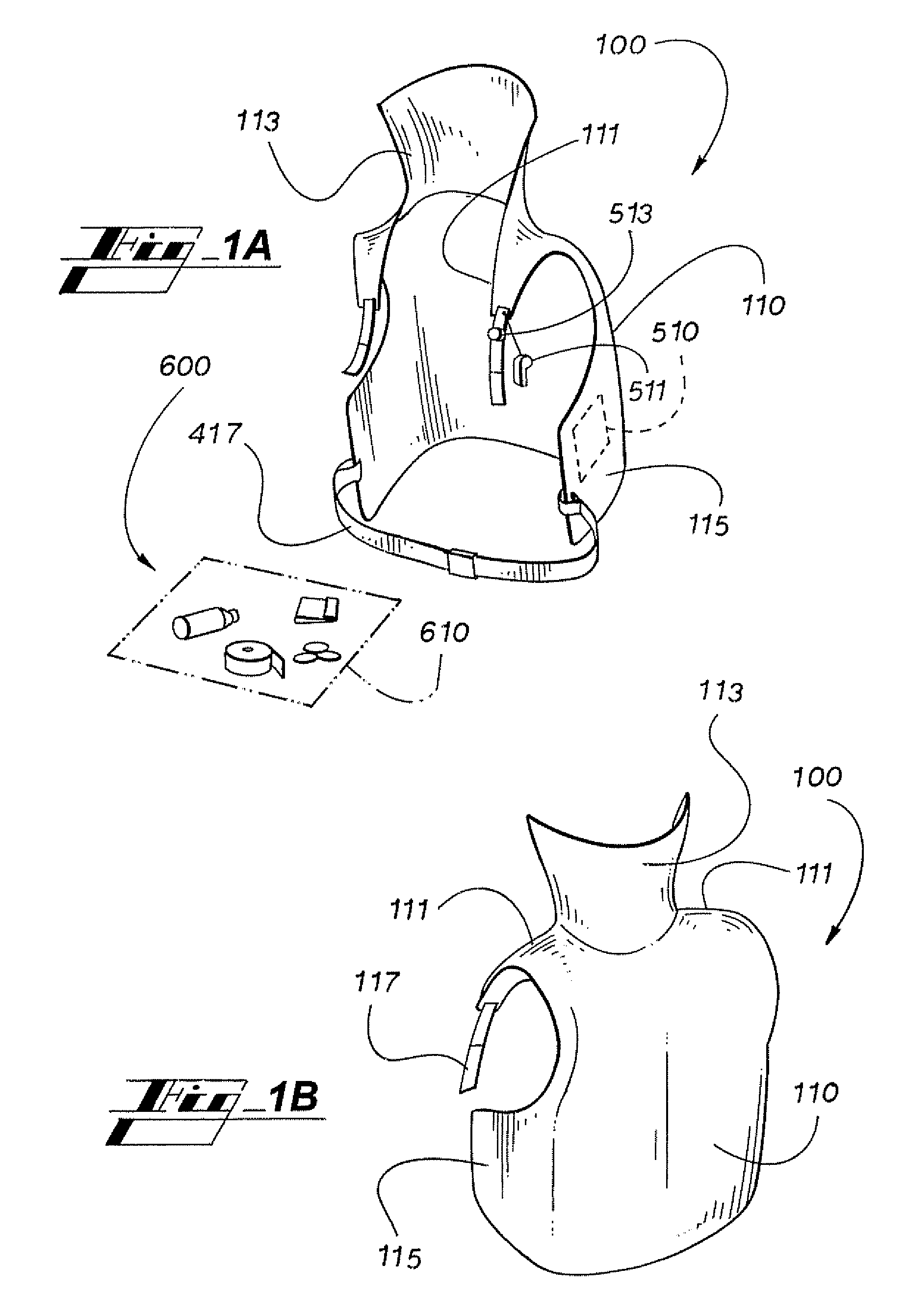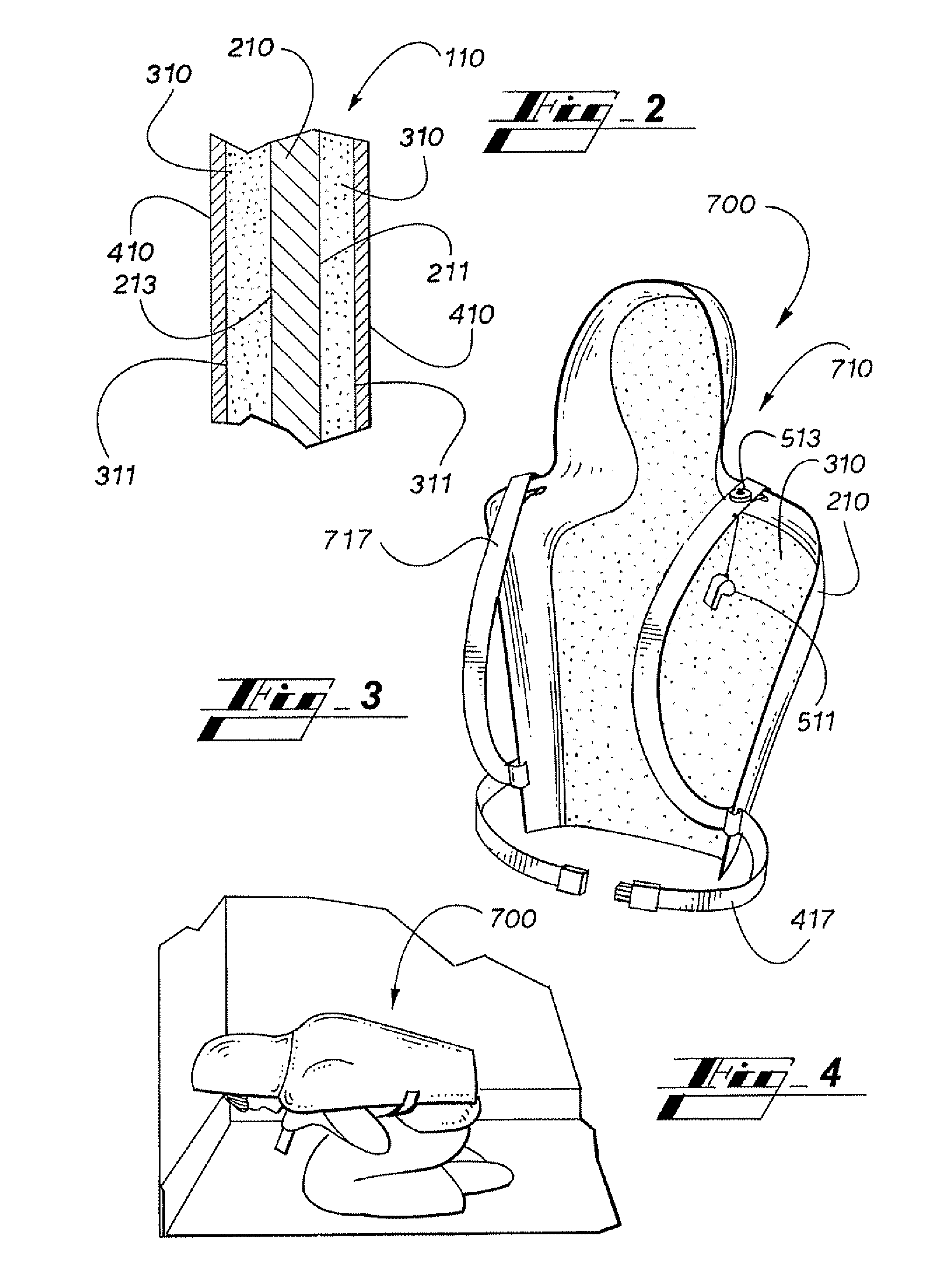Personal debris shield and system
a technology of personal debris and shield, which is applied in chemical protection, nuclear engineering, nuclear elements, etc., can solve the problems of time-consuming process, inapplicability, and inability to protect only a limited part of the body, and achieve the effect of quick donned and removed, facilitating survival and rescu
- Summary
- Abstract
- Description
- Claims
- Application Information
AI Technical Summary
Benefits of technology
Problems solved by technology
Method used
Image
Examples
Embodiment Construction
[0025]In describing preferred embodiments of the present invention illustrated in the Figures, specific terminology is employed for the sake of clarity. The claimed invention, however, is not intended to be limited to the specific terminology so selected, and it is to be understood that each specific element includes all technical equivalents that operate in a similar manner to accomplish a similar purpose.
[0026]Now referring to FIGS. 1A-3, personal debris shield 100 is usable to protect a wearer against injury, such as that caused by falling, wind-driven, or other projectile debris. Personal debris shield 100 preferably comprises body 110 including shoulder extensions 111, neck projection 113, and abdomen extensions 115. Body 110 preferably includes a shape that is generally conformal to the back of a user, and may preferably also be generally conformal to the neck, head, shoulders, and / or ribs of a user. Body 110 preferably has sufficient structure to generally maintain such confo...
PUM
 Login to View More
Login to View More Abstract
Description
Claims
Application Information
 Login to View More
Login to View More - R&D
- Intellectual Property
- Life Sciences
- Materials
- Tech Scout
- Unparalleled Data Quality
- Higher Quality Content
- 60% Fewer Hallucinations
Browse by: Latest US Patents, China's latest patents, Technical Efficacy Thesaurus, Application Domain, Technology Topic, Popular Technical Reports.
© 2025 PatSnap. All rights reserved.Legal|Privacy policy|Modern Slavery Act Transparency Statement|Sitemap|About US| Contact US: help@patsnap.com



